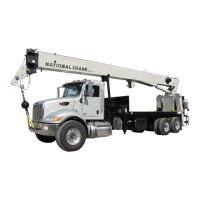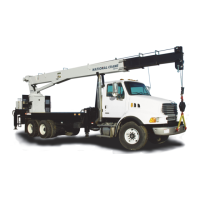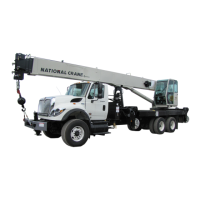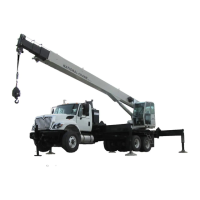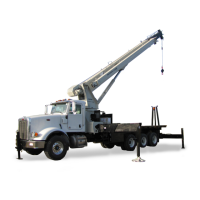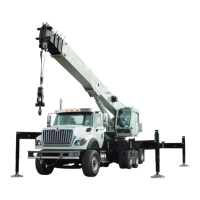SERVICE 800D
5-2
Published 5-27-2018 Control # 039-06
sense. It is not just a matter of “Do's” and “Don'ts”. Stay
clear of all moving parts.
Environmental Protection
Dispose of waste properly! Improperly disposing of waste
can threaten the environment.
Potentially harmful waste used in National Cranes includes
— but is not limited to — oil, fuel, grease, coolant, air
conditioning refrigerant, filters, batteries, and cloths which
have come into contact with these environmentally harmful
substances.
Handle and dispose of waste according to local, state, and
federal environmental regulations.
When filling and draining crane components, observe the
following:
• Do not pour waste fluids onto the ground, down any
drain, or into any source of water.
• Always drain waste fluids into leak proof containers that
are clearly marked with what they contain.
• Always fill or add fluids with a funnel or a filling pump.
• Immediately clean up any spills.
Cleanliness
An important item in preserving the long life of the crane is
keeping dirt out of working parts. Enclosed compartments,
seals, and filters have been provided to keep the supply of
air, fuel and lubricants clean. It is important that these
enclosures be maintained.
Whenever hydraulic, fuel, lubricating oil lines are
disconnected, clean the adjacent area as well as the point of
disconnect. As soon as the disconnection is made, cap, plug
or tape each line or opening to prevent entry of foreign
material. The same recommendation for cleaning and
covering apply when access covers or inspection plates are
removed.
Clean and inspect all parts. Be sure all passages and holes
are open. Cover all parts to keep them clean. Be sure parts
are clean when they are installed. Leave new parts in their
containers until ready for assembly.
Hydraulic Systems
Contaminants in a hydraulic system affect operation and will
result in serious damage to the system components. Dirty
hydraulic systems are a major cause of component failures.
If evidence of foreign particles is found in the hydraulic
system, flush the system.
Disassemble and assemble hydraulic components on a
clean surface.
Clean all metal parts in a nonflammable cleaning fluid. Then
lubricate all components to aid in assembly.
Inspect all sealing elements (O-ring, gaskets, etc.) when
disassembling and assembling the hydraulic system
components. Installation of new sealing elements is always
recommended.
When installing metal hydraulic tubes, tighten all bolts finger
tight. Then, in order, tighten the bolts at the rigid end, the
adjustable end, and the mounting brackets. After tubes are
mounted, install the hoses. Connect both ends of the hose
with all bolts finger tight. Position the hose so it does not rub
the machine or another hose and has a minimum of bending
and twisting. Tighten bolts in both couplings.
Due to manufacturing methods, there is a natural curvature
to a hydraulic hose. The hose should be installed so any
bend is with this curvature.
In case of replacement hoses with angled stem reusable
fittings, the hose curvature must be taken into consideration
when assembling and positioning the angled stem.
Fo
r
Reference
Only
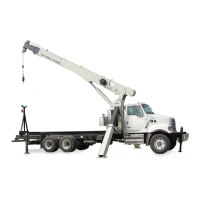
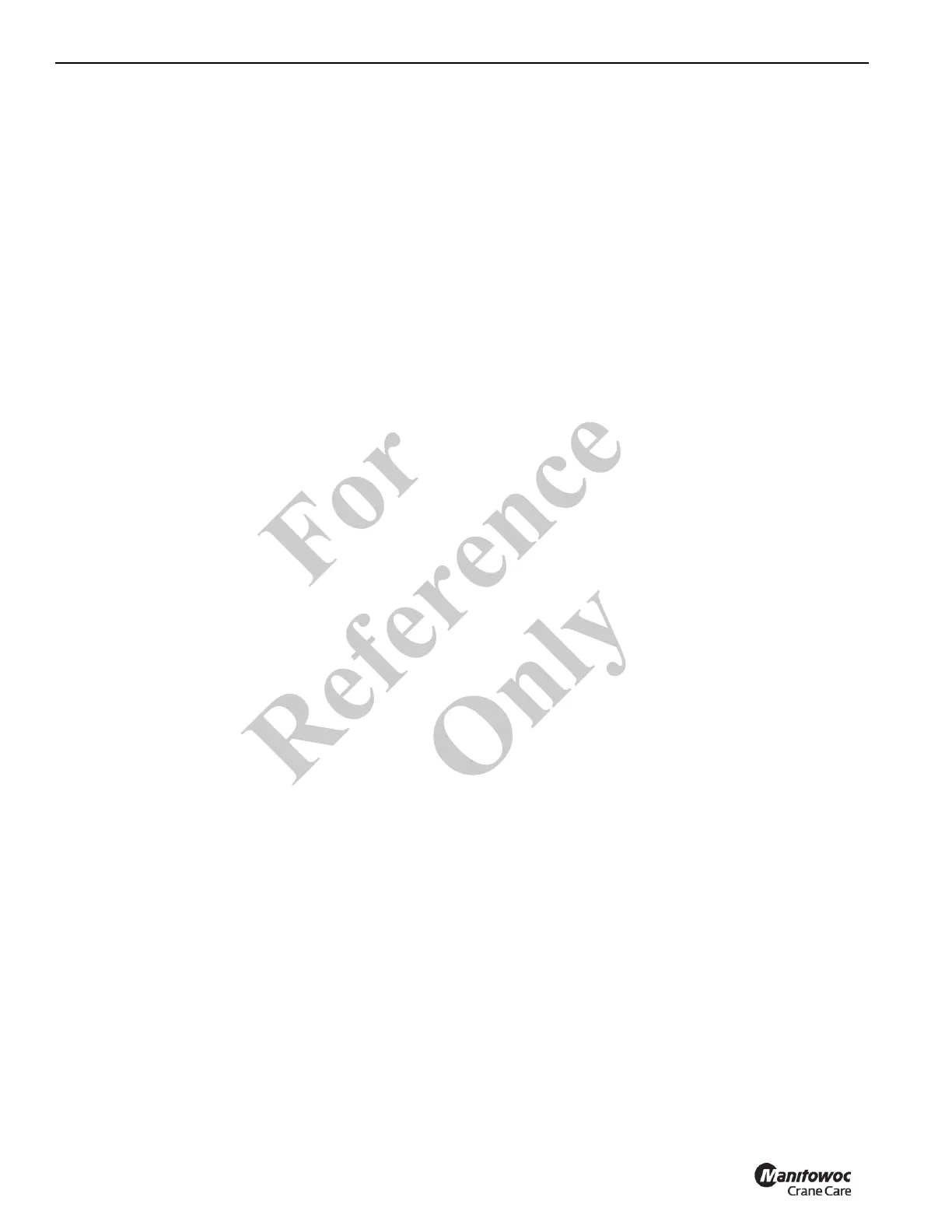